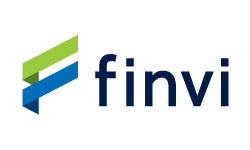Source: site

It’s a fair guess that financial-institution strategists are as preoccupied with artificial intelligence as the big thinkers in every other industry: which is to say, very much so. And they’ve likely made about the same degree of progress: which is to say, not that much.
According to a new study by Evident, an intelligence company that benchmarks and tracks AI adoption in financial services, roughly 70% of institutions have nothing tangible to show for their AI investments, while just 30% report measurable business results.
Notably, the study, which tracked 173 AI use cases across 50 major banks, doesn’t weigh in at all on the many small and midsized institutions also feeling the heat. For these institutions, the potential to use AI to lever up their competitive position is significant; but the risk is that, like many past industry advances, its benefits will end up accruing mainly to the largest players.
Evident’s study suggests that retail financial services may already be heading down that path, and in a way that may be even more lopsided than in the past. It describes how a few elite institutions, including JPMorgan Chase and Capital One, have been consolidating their advantages in talent and execution, positioning themselves as the only firms currently able to conduct market-facing AI experimentation at scale, with quantifiable results.
The challenge cuts across the entire industry spectrum (large, mid-sized, and small; banks and credit unions alike) all struggling in different ways against legacy systems, risk aversion, and fragmented data.
“Most banks right now, by choice or not, are letting AI automate narrowly defined processes,” said AK Patel, CEO of ATTUNE, a platform that helps financial institutions streamline onboarding, lending and cross-selling. “But the deeper opportunity comes from deeper implementation, moving from surface automations to end-to-end development and processing.”
The institutions that will gain most from AI are those that push beyond passive back-office efficiencies toward active front-office innovation, using AI to reimagine products, experiences, and speed to market. This article takes a closer look at what players in each industry tier can do to seize the opportunity.
Want more insights like these? Check out Attune’s content hub: Connected Banking Starts Here: Modernize Lending, Onboarding & Cross-Sell
Small Institutions: Building Speed Without Scale
For smaller banks and credit unions, the AI conversation begins with math. They want the same digital responsiveness as larger competitors but can’t afford the infrastructure or staffing that traditionally make that possible. The promise of AI, especially low-code and automated implementation, changes that equation. What once required teams of engineers months of coding can now be deployed out-of-the-box, configured and pushed live in a day.
That shift finally brings digital innovation within reach for smaller institutions that had long been priced out of it. But even when self-service tools are available, many institutions still rely on outside help for routine changes or maintenance. For these players, the first question is whether they’re willing or able to take product dev work inhouse, even with “AI inside”; the next question is whether they can find partners that can meet them on their own terms.
In a recent interview with The Financial Brand, Patel, whose company just launched an AI-driven self-service “orchestration” layer that lets banks configure and deploy digital products in hours rather than months, described how that benefit might play out for smaller institutions. “AI automates what happens behind the scenes while preserving the human connection and market knowledge that defines community financial services,” he said. “Smaller institutions gain digital scale while increasing market-responsiveness.”
Mid-Sized Institutions: Taking Back Control
For mid-sized players, the AI opportunity centers on reclaiming control. These institutions typically have strong internal teams and clear strategic ideas, yet they remain bound by vendor SLAs that slow innovation. The gap between what they can envision and what they can deliver is wide.
AI-driven orchestration tools, especially those that let internal teams configure and launch digital products directly, can help close that gap. By removing layers of technical dependency, mid-sized institutions can move from periodic rollouts to something closer to iterative improvement. The obstacle for many is that their existing systems are inflexible; but AI can serve as the connective layer linking compliance, product, and technology.
In many ways, the mid-sized bank scenario is the sweet spot, Patel said. He described a $50 billion-asset institution whose biggest pain point is lack of control over their core platform vendor’s technology. “They have to load tickets to make changes,” he said. “Meanwhile, you have smart people who aren’t afraid of a keyboard. They have strategic ideas, but their platform doesn’t let them get their hands on it.”
Large Institutions: Turning Scale into Agility
For the largest banking companies, AI has already become integral to experimentation but broader integration remains the challenge. These organizations run multiple innovation hubs and pilot programs, yet their complexity makes it hard to translate the successes they are having into enterprise-wide transformation.
AI sandboxes offer a partial solution, allowing teams to safely operationalize testing of new products or features without compromising core systems: for example, simulating risk scenarios or exploring ways to shorten compliance cycles. “They can use sandboxing as a test for their bigger initiatives and launch those initiatives quickly without having to wait for the legacy roadmap,” Patel said.
What distinguishes the leaders will be discipline, in effect by putting their money where their mouth is. These institutions can bring significant resources to the table, building frameworks that capture lessons across teams and test beds, and feed them back into product design and governance.
This approach has long been central to the business models of massive data-driven marketers like Chase and Capital One. Other very large institutions now have a chance to catch up, establishing parallel innovation streams using a unified AI architecture that accelerates both test-and-learn and deployment.




